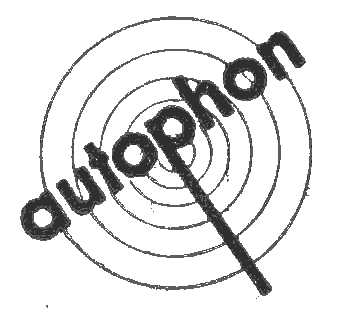

VHF Receiver E-628
Autophon AG, Solothurn



|
VHF Receiver E-628
|

|
|
überarbeitet am 1.9.2010 |
In parallel to their shortwave receiver E-627, Autophon did develop the VHF-receiver
E-628 with coverage of the VHF Air band in AM in the middle of the fifties. This receiver
was based on a project of a receiver similar to the E-46. The receiver comes in a army olive green - gray metal cabinet, a protective front
cover will cover up the whole front panel during transports and can be attached
to the back, when the receiver is in operation. The left side of the front panel can be divided in three sections: on the
top the antenna / earth connectors and the signal strength meter, in the middle
the dial, the bandswitch and the main tuning knob and a bottom row with all other
necessary controls. The antenna connector is of SO-239 type. Next to the antenna and earth connectors and some fuses, You find a round signal stregth meter switchable to display the plate / B+ voltage. A round knob allows to dim the dial lights. Below, You find the dial of the turret tuning assembly. Due to the construction of
the set, the analog dial is not linear, so on higher frequencies, the lines are
much nearer then in the low band segments - thus dial accuracy is
better low frequencies. Dial calibration has been made at the manufacturer
using a crystal controlled calibrator providing a spectrum of known frequencies,
and individual engraving of the frequency marks on each set's dial. The controls below are used for RF and AF signal processing: The switch
"Anti - Fading" activates the automatic gain control (AGC),
the RF-Gain control (called "Empfindlichkeit / Sensibilité")
should be turned fully clockwise for standard operation with AGC on. The
following knob "Laustärke/ Puissance" (in german/french language)
is the volume control. The next control will switch the receiver's FM deemphasis
from none / 75 / 280 usec depending whether You listen to a commercial FM broadcast
or a narrow band utility signal. The Squelch with adjustable level is active only
on FM, the next control will switch the bandwidth from 8 kHz (AM mode) to 25 (FM narrow)
and 75 kHz (acceptable for pleasent FM broadcasting listening, well suited for FM DXing).
The AM / FM mode switch is situated a little bit above left to the station's clock. For FM broadcast reception, the modes switch should be set to FM, the AVC /
"Antifading" should be activated and the Sensitivity control should be
turned fully clockwise on the "10". Now look for Your favourite FM broadcaster
in the 85 - 122 MHz segment, Squelch should be set to "0", Bandwidth 75 kHz
and Deemphasis should be set to 75 usec. The Deemphasis control will reduce the
level of the higher parts of the audio spectrum to give You a more natural audio
impression. On standard FM transmitters, the higher frequencies are "emphasized",
i.e. they are transmitted with higher amplification gain. This fifty year old Autophon set offers very pleasent reception in the FM broadcast as well as the Air band - and usually this sets work very reliably, what You would expect from "Swiss Made" quality. Not to mention that Swiss Army gear is usually heavy, rock-solid and is designed and built to last centuries... further reading: © Martin Bösch 26.12.2006
|
||||